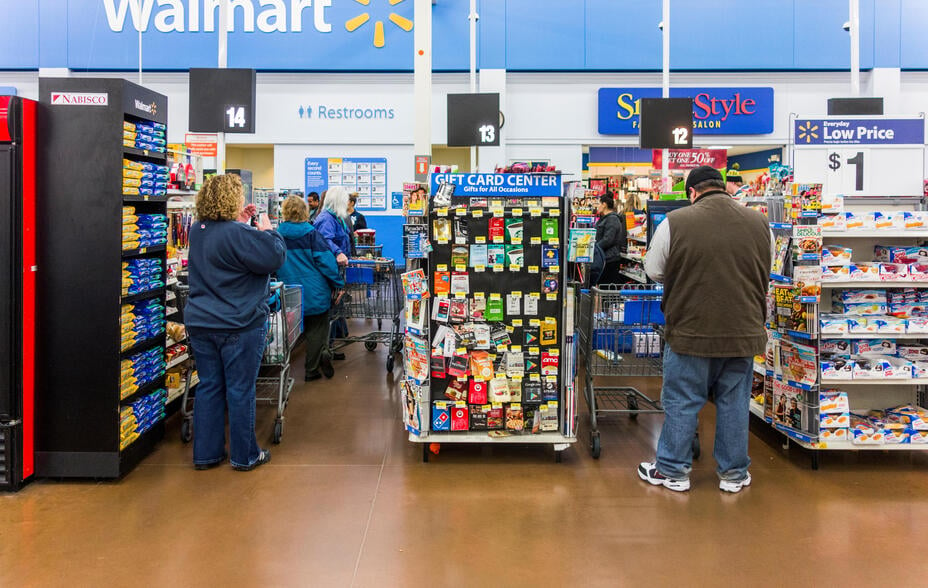
Investors should consider the investment objectives, risks, charges and expenses carefully before investing. This information and other information about the Funds can be found in the prospectus and summary prospectus. For a prospectus and summary prospectus, please visit our website at bailliegifford.com/usmutualfunds Please carefully read the Fund's prospectus and related documents before investing. Securities are offered through Baillie Gifford Funds Services LLC, an affiliate of Baillie Gifford Overseas Ltd and a member of FINRA.
Retail is a technology business. The mission of bringing goods to consumers never changes, but the means evolve. In 1872, Aaron Montgomery Ward took advantage of a budding railway network to pioneer the mail-order catalog. It quickly became a lifeline for isolated rural communities. Meanwhile, urbanisation and mass transit agglomerated shoppers in cities, giving birth to department stores like Wanamaker’s and Macy’s.
By the 1920s, automobiles drove suburban development, reducing downtown foot traffic. Sol Price and Sam Walton took a few more decades to capitalise on the trend. FedMart was founded in 1954, and Sam opened his first Walmart in 1962. By then, automobile dependence was firmly established, and retail was ready for disruption. The big box store would offer convenience of access and breadth of selection at rock-bottom prices. Computers then enabled the model to scale nationwide. In 1975, while cars brought shoppers to Walmart’s front door, IBM machines kept the shop floor stocked with inventory. It started a journey to digitise every aspect of their operations.

© B.O'Kane / Alamy Stock Photo
Now faster and cheaper, these same computers would be at the heart of the latest evolution: e-commerce. In a throwback to Montgomery Ward, Amazon broadened selection with a digital catalog. What started with books soon expanded to nearly all goods. Specialised online retailers emerged, and brick-and-mortar evolved to meet new customer expectations.
Throughout these periods, new winners emerged, old incumbents disappeared, and some evolved with the times. Retail is an ever-changing landscape of merchants trying to understand consumers and technology. Riches are made by those who seize the trend and lost by those who can’t or won’t embrace it.
Hence, retail is a fertile hunting ground for growth investors. As a poet once said, the times they are a-changin’, and wherever there’s change, there lurks opportunity. Nobody knows what the future will bring, but we know an entrepreneur is, at this very moment, dreaming big about what it could be. Will AI complement and entrench existing models or bring a new age of personalised shopping assistants? Which incumbents will have the cultural flexibility needed to respond, and which won’t?
An ecosystem of niches
Far from imposing monolithic homogeneity, innovation in retail gives the attentive investor more ways to win. Yes, one can invest early in a new model—the downside is great, but the upside exceptional. However, one may also find copycats that have great execution. Home Depot is up over 100,000 per cent since its 1980s IPO, at which point the big box model had already been broadly de-risked. Old dogs may also prove the adage wrong and learn from whizzy upstarts. Walmart took Amazon head-on and built an incredibly competitive multi-channel offering by investing in e-commerce infrastructure.
We see the current retail landscape as a rich ecosystem of ecological niches. Convenience stores offer… convenience with strategic real estate. Big box stores, augmented by an omnichannel offering, have everyday low prices. E-commerce offers unparalleled selection and convenience at competitive prices.
Models happily coexist by offering different value propositions to shoppers. A summary glance at history may lead us to wrongly conclude that only one model is worth investing in at any time. In the late 1800s, mail-order catalogs dominated the countryside while department stores ruled the city. A great retailer knows what it's about and leans into the trade-off at the heart of its value proposition. Costco isn’t offering Amazon’s selection, but it is unbeatable on price within its 4000 SKUs.
More ways to win in retail
We seek winners of all stripes. While we don’t see value in Walmart and Costco stock, we greatly admire their business models and operational cultures. We believe the suburban big box and its variants remain attractive. Just like Home Depot brought the Walmart model to home improvement, Floor & Décor is bringing the Home Depot model to hard flooring. Similarly, TJX and AutoZone, while mature, have proven resilient to competition and able to grind out growth. Brick-and-mortar ain’t dead.
E-commerce is quite obviously attractive, but even here, we find variety. Amazon is a formidable company despite its e-commerce business entering middle age. Growth has slowed, but innovative thinking is unlocking new revenue streams, such as advertising. Meanwhile, Shopify built on Amazon’s foundation and expanded the market by enabling small merchants to set up online storefronts.

© NetPhotos/Alamy Stock Photo
E-commerce offered attentive investors several waves to ride. eBay connected individuals. Amazon connected merchants with shoppers and built dedicated infrastructure. Shopify enables merchants to reach shoppers partly thanks to third-party logistics infrastructure developed during Amazon's rise.
Tomorrow, we see Amazon experimenting with shopping assistants. We imagine Meta creating immersive virtual reality shopping experiences and diving into social commerce alongside ByteDance’s TikTok. We see Shopify helping merchants personalise storefronts to suit individual tastes. We expect autonomous vehicles to drastically lower the delivery cost, opening even more opportunities for Doordash. We see Alimentation Couche-Tard evolving its convenience stores to cater to electric vehicles. We expect Floor & Decor customers to visit a store and website as part of an omnichannel journey. We also know there will be some painful surprises, so we don’t dogmatically predict and position ourselves for one definite future. Retailers are always at risk of disruption. We emphasise operating cultures with creativity and adaptability alongside excellent execution.
Far from being an uninspiring exercise in extrapolation, retail investing demands an imaginative exploration of consumer wants and technology change. Much time is spent predicting consumer sentiment and spending, but long-term investors know that what matters is where consumers go and how best to reach them. What matters is being on the right side of decadal trends. Retail truly is a technology business.
Risk factors
The Funds are distributed by Baillie Gifford Funds Services LLC. Baillie Gifford Funds Services LLC is registered as a broker-dealer with the SEC, a member of FINRA and is an affiliate of Baillie Gifford Overseas Limited. All information is sourced from Baillie Gifford & Co unless otherwise stated.
As with all mutual funds, the value of an investment in the Fund could decline, so you could lose money. International investing involves special risks, which include changes in currency rates, foreign taxation and differences in auditing standards and securities regulations, political uncertainty and greater volatility. These risks are even greater when investing in emerging markets. Security prices in emerging markets can be significantly more volatile than in the more developed nations of the world, reflecting the greater uncertainties of investing in less established markets and economies. Currency risk includes the risk that the foreign currencies in which a Fund’s investments are traded, in which a Fund receives income, or in which a Fund has taken a position, will decline in value relative to the U.S. dollar. Hedging against a decline in the value of currency does not eliminate fluctuations in the prices of portfolio securities or prevent losses if the prices of such securities decline. In addition, hedging a foreign currency can have a negative effect on performance if the U.S. dollar declines in value relative to that currency, or if the currency hedging is otherwise ineffective.
For more information about these and other risks of an investment in the Funds, see "Principal Investment Risks" and "Additional Investment Strategies" in the prospectus. There can be no assurance that the Funds will achieve their investment objectives.
This communication was produced and approved in April 2025 and has not been updated subsequently. It represents views held at the time of writing and may not reflect current thinking.
This communication contains information on investments which does not constitute independent research. Accordingly, it is not subject to the protections afforded to independent research and Baillie Gifford and its staff may have dealt in the investments concerned.
As at April, 2025, Baillie Gifford held Amazon, Home Depot, Floor & Décor, TJX, Autozone, Shopify, Meta, ByteDance, DoorDash and Alimentation Couche-Tard. A full list of holdings is available on request and is subject to change.
149720 10054512





